So it's finally come to this. Not just any iPhone, It's Apple iPhone 13 Pro Max. The flagship model in Apple's newest range of superphones. And I say superphone because, with its super-strong A15 Bionic chipset, this bad boy is taking on opponents and flinging them away like garbage. Not only is it more potent than other smartphones on the market, but it also has a longer battery life and a slew of new features that will make even Android fans like myself sit up and take notice.
Apple has finally joined the 120Hz party with its new flexible display and iOS 15, which has better capabilities and many new tricks. The siren song for iPhone fans, though, will be the cameras, including bigger apertures, better sensors, and entertaining new features, including Macro and Cinematic Mode.
All of this power and status, however, does not come cheap. The starting price is $1,099, but you'll pay through the nose for storage, which costs $1,399 for the 512GB of storage and $1,599 for the 1TB of storage in my review unit. Is this the tale of an Android enthusiast defecting to the Apple side? No, but I do understand what makes this phone in particular so enticing, so much so that it's the newest member of our top smartphones page, and you will as well.
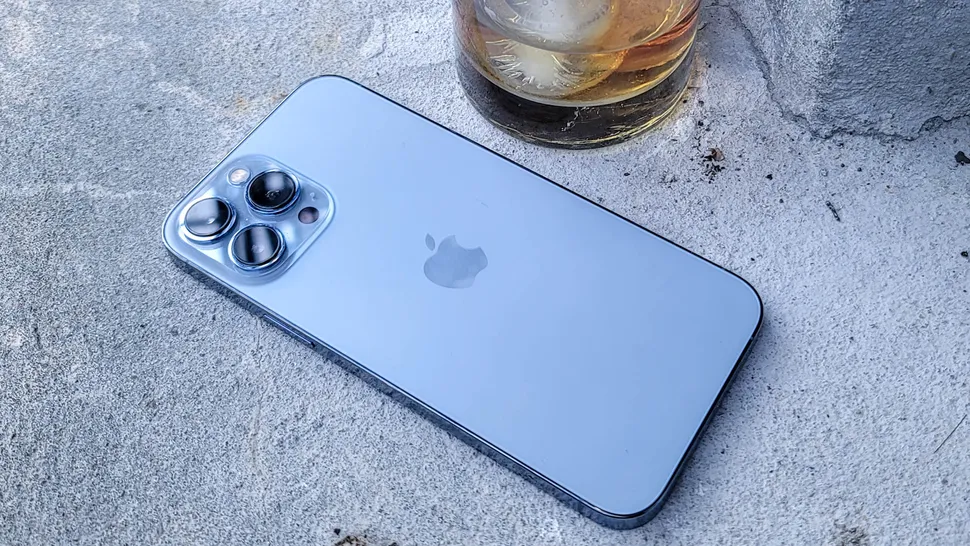
(Image credit: Future)
Apple iPhone 13 Pro Max Review: Pricing & Configurations
A high-end device needs a high-end budget. Apple was kind enough to provide me with the $1,399 configuration, including the A15 Bionic CPU, 6GB of RAM, and 512GB of storage. The cheapest model costs $1,099 and has 128GB of storage. The 256GB model costs $1,199, while the 1TB model costs $1,599.
Apple iPhone 13 Pro Max Review: Design
I have to admit that Apple understands how to design a stunning smartphone. I fell in love with the iPhone 13 Pro Max the moment I pulled it out of its package. I mean, how could I not be? The phone is glass and stainless steel and comes in the stunning hue Apple calls Sierra Blue.
Despite being a fingerprint magnet, the light blue metal cladding gleams in the light. It has the usual matte notches at the corners, adding a lovely finishing touch. The Side button is located on the phone's right side. The ring/silent switch is on the left, with two volume controls and a SIM card port. The Lightning port and integrated microphones and speakers can be found on the phone's bottom.
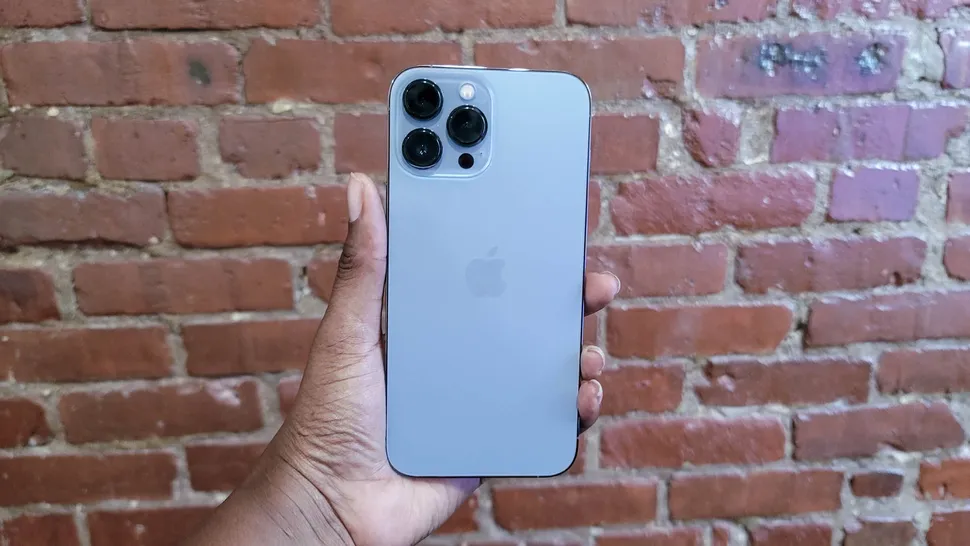
(Image credit: Future)
The grayish-blue glass rear features a matte surface that reduces fingerprints slightly while emphasizing the shiny half-eaten fruit emblem. Apple's renowned tri-camera sensor is housed in a slightly elevated rounded square nodule in the top-left corner. The 13 Pro Max is also available in Graphite, Gold, and Silver if you don't like blue in all of its tones.
I took a long, appreciative look at the 6.7-inch Ceramic Shield display when I flipped the phone over. As an owner of a Samsung Galaxy Note 20 Ultra, I find the bezels on the 13 Pro Max to be a little too thick. That's not to say they're exceptionally chubby, but with Samsung's almost bezel-free Infinity-O display, everything appears a little hefty. There's also the enormous top-notch, which houses the 12-megapixel camera as well as another set of microphones and speakers.
A word about the top-notch: yes, I know they cut it smaller, but it's still a conspicuous ugly in what otherwise is a gorgeous exhibit.
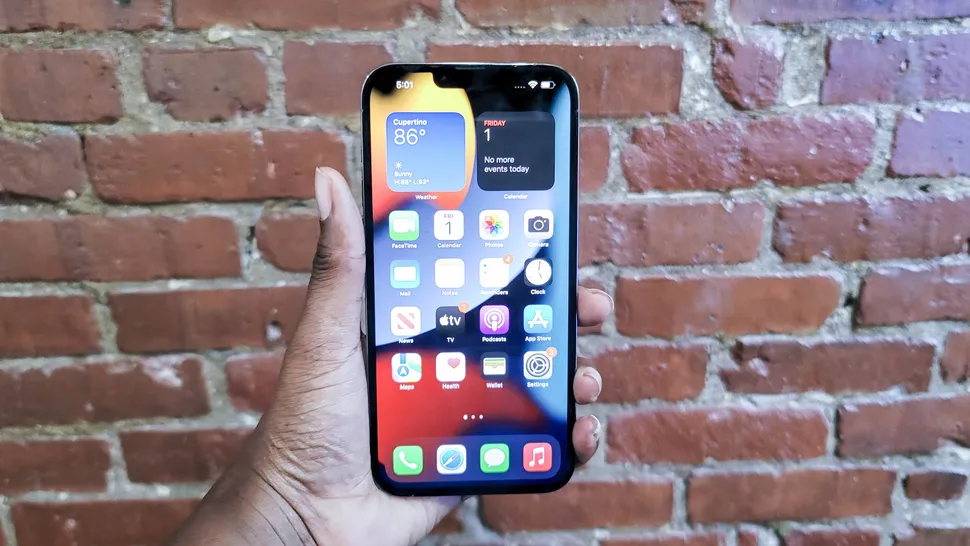
(Image credit: Future)
Overall, the iPhone 13 Pro Max is a stylish piece of technology. As a result, while I appreciated Apple's thoughtfulness in including a dignified black leather cover, I felt a twinge of pain hiding all that loveliness. But, as someone who just had to replace a phone due to a severely shattered screen, I sympathize.
If you want to gamble and go caseless, Apple claims that their patented dual-ion exchange process treated glass on the back, together with the Ceramic Shield on the front, makes it one of, if not the, most complicated phone on the market. (Learn more about the iPhone 13's durability from Allstate.) It also has an IP68 water-resistant certification. However, I strongly advise you to visit our best iPhone 13 covers page.
As attractive as stainless steel is, it contributes to the phone's weight, along with the other components. Not that I mind; I like a phone with a solid feel about it. The 13 Pro Max's frame is 6.3 x 3.1 x 0.3 inches and weighs 8.5 ounces. The Note 20 Ultra (6.5 x 3 x 0.32 inches) weighs 7.3 ounces less. The Samsung Galaxy S21 Ultra weighs 8.07 ounces and measures 6.5 x 3 x 0.35 inches.
Apple iPhone 13 Pro Max Review: Display
Do we know the iPhone 13 Pro Max's display is vital owing to the Ceramic Shield but is it also beautiful? The answer is emphatical yes –– if you like the color of whatever you're looking at to be more natural. This is one of the first iPhones to use Apple's Super Retina XDR with ProMotion technology. That is the designation given by Apple to its 120Hz flexible display, which joins a variety of ultra-premium phones.
However, Apple always has a catch since ProMotion can dynamically vary the refresh rate between 10 and 120Hz. When you're reading a book or browsing the web, ProMotion will slow down compared to when you're playing a game like Genshin Impact. Many iPhone owners will enjoy the decreased pace since it saves battery life. I never saw any stuttering or slowing down in any situation. The Galaxy S21 Ultra matches Apple's ProMotion perfectly in the Android universe.
Watching the newest trailer for the forthcoming Netflix film "The Harder They Fall" on the 6.7-inch, 2778 x 1284 screen alongside the Note 20 Ultra (6.9-inch, 3088 x 1440) revealed some interesting details. The first step is to keep TrueTone turned on. True Tone, another piece of proprietary technology, automatically changes the screen's white balance based on the lighting circumstances. In terms of color, it allowed the 13 Pro Max to stay within striking distance of the Note 20 Ultra.
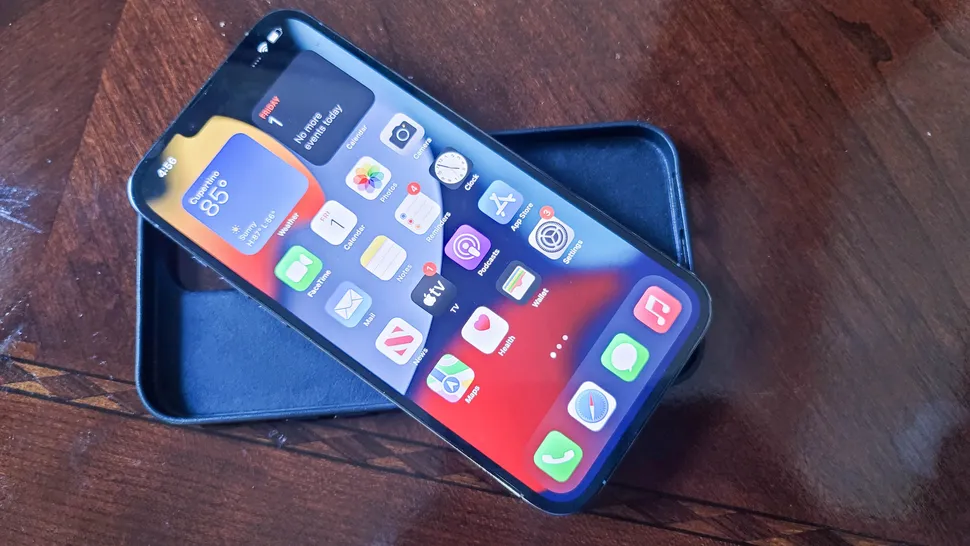
(Image credit: Future)
A stream of blood blasting from the back of a helpless bandit almost equals the Samsung. While I recognize that the Note's Super AMOLED display is oversaturated, I can't help but like the ruddier coloring of the man's skin tone on the Note to the more realistic presentation on the iPhone. And while I had assumed that the iPhone's smaller screen would give it an edge in terms of clarity, details like the knots in the building's wooden slats were noticeably crisper. This is due in significant part to the PPI (pixels per inch). The iPhone 13 Pro Max has a PPI of 458, whereas the Note 20 Ultra has a PPI of 496.
I went to the numbers to ensure my eyes weren't playing tricks on me. The iPhone 13 Pro Max reproduced 77 percent of the DCI-P3 color spectrum, falling short of the smartphone average of 97 percent. The S21 Ultra has a higher contrast ratio of 81.4 percent, but the Note 20 Ultra has the highest contrast ratio of 143 percent.
When we examined color accuracy, the iPhone scored 0.21 (closer to zero is better), higher than the Note's 0.24 and the category average. The S21 Ultra performed the worst, with a score of 0.35.
The 13 Pro Max averaged 837 nits throughout the brightness test, living up to Apple's promise that this is their brightest display to date. The iPhone easily outperformed the 573-nit average and the S21 Ultra (821 nits) and Note Ultra (663 nits).
Apple iPhone 13 Pro Max Review: Audio
Some of these laptop manufacturers may wish to consult with Apple on improving the sound quality of their speakers. The iPhone 13 Pro Max's built-in speakers are robust, quickly filling my basement office and trickling upward via the spiral staircase. In addition, the speakers generated clear audio with well-balanced highs, mids, and lows.
I was hit with sharp snares, intense strings, and warm voices as I listened to Aint Afraid's "I Got God." However, at maximum level, I noticed some muddiness from the reverb. When I heard the same tune on my Note 20 Ultra, the reverb was quieter but less potent than the iPhone.
If you want different earphones or headphones, I recommend the AirPods Pro or AirPods Max. If those don't appeal to you, have a look at our best wireless headphones and best wireless earbuds sites.
Apple iPhone 13 Pro Max Review: Performance
As a result, this section is devoted to the potent A15 Bionic CPU. Apple could have kept the A14 and still had the most powerful phone on the market. But congratulations to those who go above and above. With its 6-core CPU, the iPhone 13 Pro Max is blazing on all cylinders. Two cores are labeled as performance, while the remaining four are efficient. The 5-nanometer device contains 15 billion transistors, ready to launch and operate anything your tiny heart wishes. It also boasts a 16-core Neural Engine, which is helpful with machine-learning apps, AI, and, of course, cameras and all those additional modes (more on that later).
As a result, this section is devoted to the potent A15 Bionic CPU. Apple could have kept the A14 and still had the most powerful phone on the market. But congratulations to those who go above and above. With its 6-core CPU, the iPhone 13 Pro Max is blazing on all cylinders. Two cores are labeled as performance, while the remaining four are efficient. The 5-nanometer device contains 15 billion transistors, ready to launch and operate anything your tiny heart wishes. It also boasts a 16-core Neural Engine, which is helpful with machine-learning apps, AI, and, of course, cameras and all those additional modes (more on that later).
The A15 Bionic CPU also has a 5-core GPU, which Apple claims are 50% quicker than the competition. This should be useful for both gaming and photography. As I sliced, fired, and blasted my way into Genshin Impact, enormous red-orange plumes from my fire elemental magic impacted the hapless adversaries in my path.
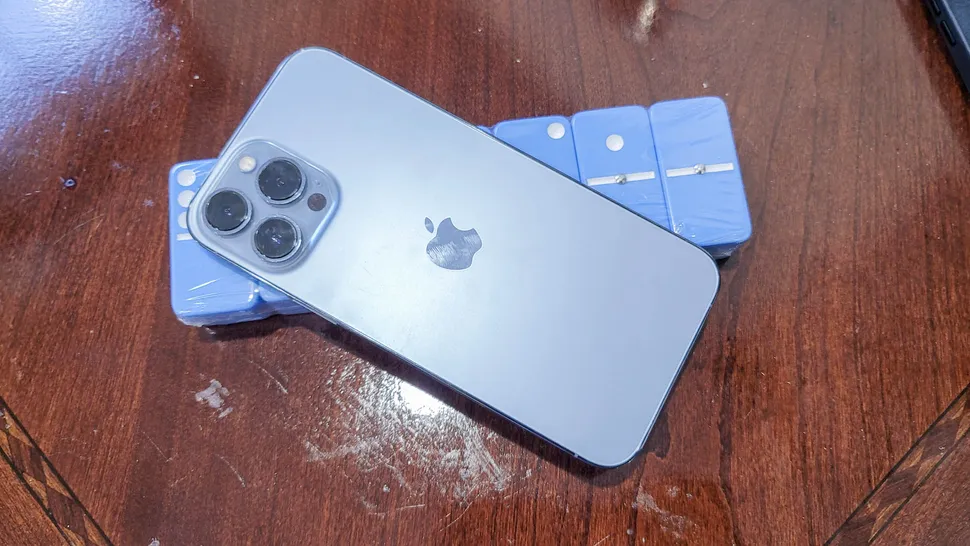
(Image credit: Future)
When we conducted the 3DMark Slingshot Extreme test (Unlimited OpenGL ES 3.1), one of the more difficult graphics tests we do, the iPhone 13 Pro Max, scored 6,804, well above the 5,713 average. The Galaxy S21 Ultra, on the other hand, received 8,593 points, while the Note 20 Ultra received 7,728.
The 13 Pro Max, on the other hand, won the Adobe Premiere Rush video editing test, turning a 4K movie to 1080p in 0:25. The category average of 1:22, the Note (1:16), and the S21 Ultra (1:03) had no chance.
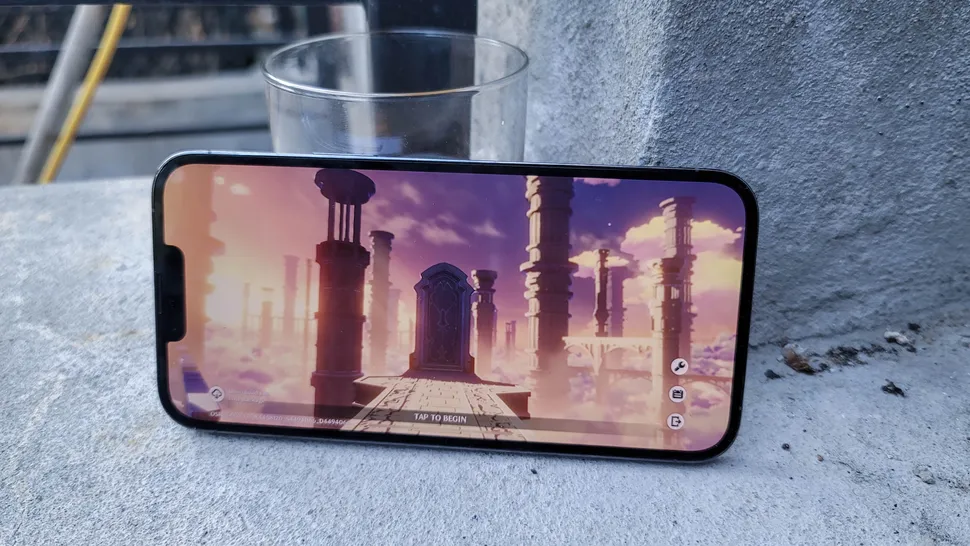
(Image credit: Future)
Apple iPhone 13 Pro-Max Review: Battery Life and Charging
Not only does the A15 Bionic CPU provide the iPhone a tremendous amount of power for multitasking, gaming, and photography, but it also improves battery life owing to its four efficiency cores. On the Laptop Mag Battery Test, which consists of continuous web browsing over T-5G Mobile's network at 150 nits of brightness, the iPhone 13 Pro Max lasted 12 hours and 16 minutes. It outperformed the smartphone average of 10:07, as well as the Galaxy S21 Ultra (11:25) and Note 20 Ultra (10:38).
Unfortunately, the 13 Pro Max does not enable rapid charging because Apple prefers the Lightning connector. However, this is the only iPhone that can provide you with 27W of wired charging. There is a catch. This occurs only when the phone falls below a particular level; beyond that, it converts to 20W like its other siblings. In comparison, the Note and S21 Ultra need 25W. Apple promises that the iPhone will charge to 50% in 35 minutes.
The iPhone reached 19% in 15 minutes during our charging test and 40% in 30 minutes.
The Note achieved 30 percent after 15 minutes and 56 percent after 30 minutes. The S21 Ultra performed similarly to the Note, reaching 31 percent in 15 minutes and 56 percent in 30 minutes.
Apple iPhone 13 Pro Max Review: Cameras
But here's the primary reason you should buy the iPhone 13 Pro Max: the cameras. The 13 Pro Max adds a slew of enhancements to an already excellent experience. It's called the Pro Camera system, and it's made up of retooled Wide, UltraWide, and Telephoto sensors. You get a 12MP wide-angle primary sensor with an outstanding f/1.5 aperture and larger 1.9um pixels for better low-light performance. The 12MP ultra-wide has also been upgraded to an f/1.8 aperture, while the 12MP telephoto has been upgraded to a 3x optical zoom from a 2x optical zoom, but at the expense of the crack, which has been reduced to f/2.8 from f/2.0.
However, the image is incomplete without the A15 Bionic CPU (yes, again). The miracle chip has a new ISP (image signaling processor) and other machine learning and AI enhancements to improve computational photography and videography.
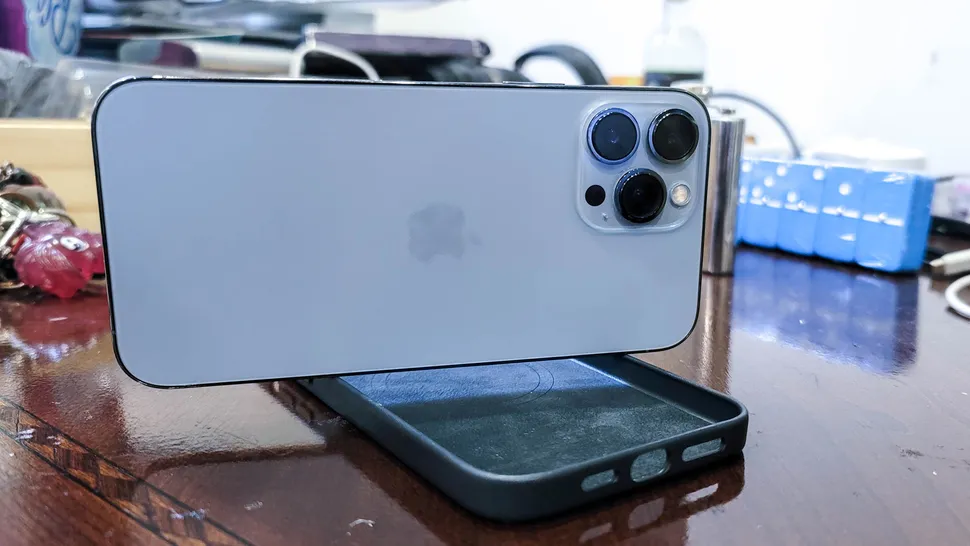
(Image credit: Future)
All of this paves the door for a slew of new camera settings that will have rival phone manufacturers rushing. The much-lauded Cinematic Mode comes first. As the name implies, this is all about producing near-movie-quality video by capturing altering depth of focus. It's a fantastic trick that will appeal to wannabe filmmakers and TikTokers.
A photographic Style is a granular tool for beginner and professional photographers. This function allows you to experiment with Tone and warm settings to customize the iPhone camera output to your satisfaction. It comes with five preset styles (Standard, Rich Contrast, Vibrant, Warm, and Cool), but you may change any of the modes as you see appropriate. The camera will then default to the settings you specified.
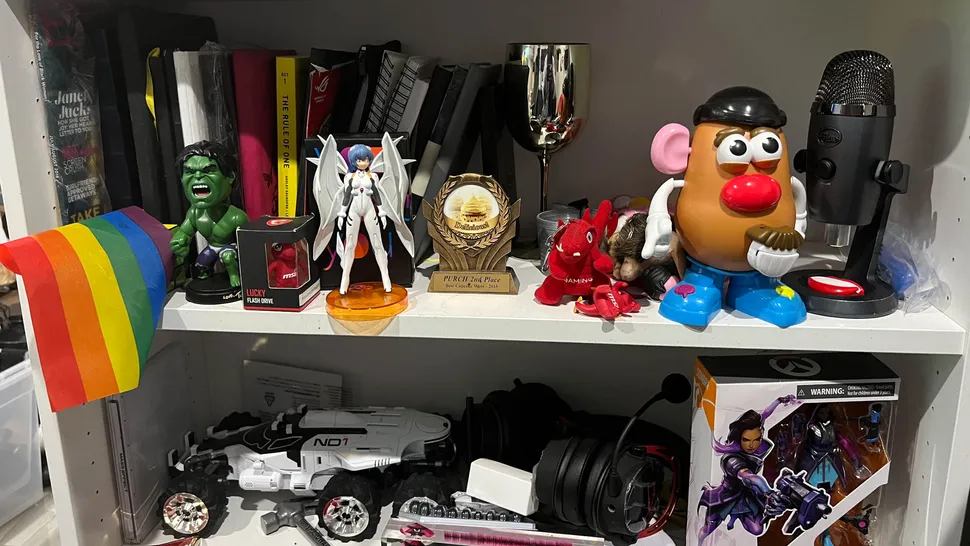
(Image credit: Future)
Do you want to get up and personal with your subject? The new Macro mode appears to be precisely what the doctor ordered. You can get some fantastic close-up shots by using the ultra-wide lens. However, I wish Apple had given you more control over it. At the moment, it starts automatically when the 13 Pro Max detects that you are close enough to the subject. This resulted in several shaky shots that didn't impress me.
Wide-angle camera
This is, without a doubt, my favorite of the five. The f/1.5 aperture produced a pleasing image, whether natural or poor illumination. I snapped a few photographs, including several during a press event when the lighting was poor. The first image was of two shelves on my geeky bookshelf at my workplace. I was blown away by how much detail the camera recorded with the overhead lights. The camera recorded every detail, from Tigra's plasticky abs to the rock Cap's fissures. You may even view the content of my book titles and accolades. The color scheme was perfect, with the bright white bookshelves, the bright red dragon, and Ryu's outfit.

(Image credit: Future)
My second image is of a delicate cocktail at a rooftop party that I attended. The camera did an excellent job catching the fine striations on the flower's petals floating in the drink in a natural light environment. It even recorded the bubbles that gathered around one of the petals in the champagne-infused liquid. The rose tint of the glass stood out against the magenta bloom.
I snapped a few low-light photographs, one of which was a spectacular shot of the Empire State Building. The LED lights on the building's spire appeared blown out, but I was blown away by how brilliantly it captured the clouds and the building's numerous windows. The purple lights in the pub weren't harmful either. I attempted to replicate the photo on my Note 20 Ultra, and while it got close, there was no cigar. I took this image while riding on a whirling carousel with extra points for the iPhone.
Ultra-wide Camera

(Image credit: Future)
As previously stated, the ultra-wide received a more considerable aperture enhancement than the wide-angle. Its f/1.8 aperture puts it on par with the primary sensors of many premium Android phones. This is especially important when it comes to capturing those stunning night images. In terms of night mode, it is now available on the ultra-wide sensor rather than only the primary sensor. I photographed the setting sun on Brooklyn street. It did an excellent job portraying the color spectrum, notably the orange-pinkish color painted on the clouds.
I also experimented with Macro mode. It's a little disconcerting to use because it activates automatically when the phone senses you're going close to an object. As the method comes in, there's a strange transition that seems like you paused a video for a second. Nonetheless, I was pleased with my purple flower photograph and the little detritus pieces on its petals.
Telephoto Camera
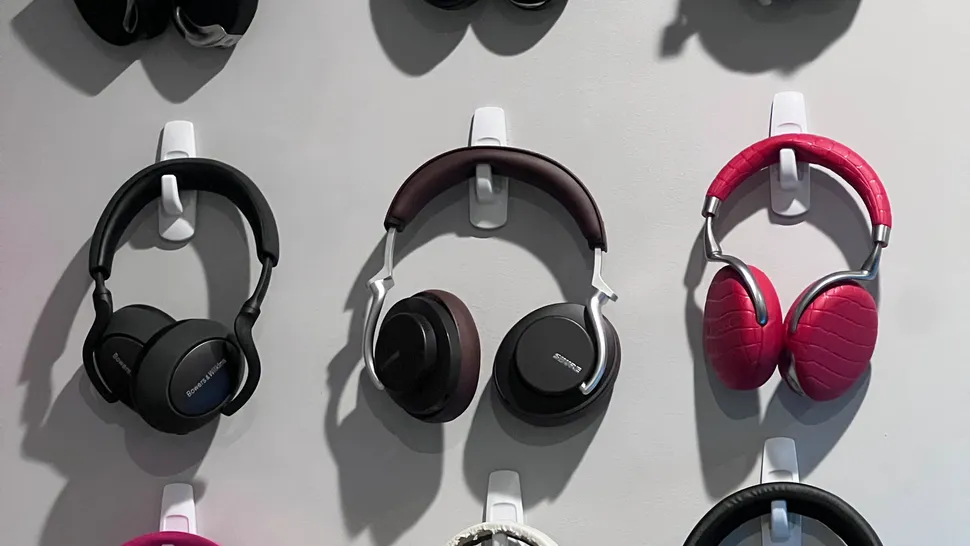
(Image credit: Future)
Telephoto is hit-or-miss. Don't get me wrong: I got some fantastic images, especially of my wall of headphones. It captured the subtle creases of my red Parrot 3 headphones' faux-alligator skin design with remarkable realism. The issue is with the digital zoom, namely the 3x optical zoom. It falls short, especially when compared to my Note 20 Ultra, which has a 50x zoom (which starts to come apart at the 20x level, but that's the idea of the thing). The 13 Pro Max's 3x optical zoom equals a 77mm lens.
The detail began to blur as soon as I picked the 3x zoom to capture an image of what seemed to be a rotten apple on a branch. When I pushed it to the maximum 15x, things started looking splotchy.
Front Camera
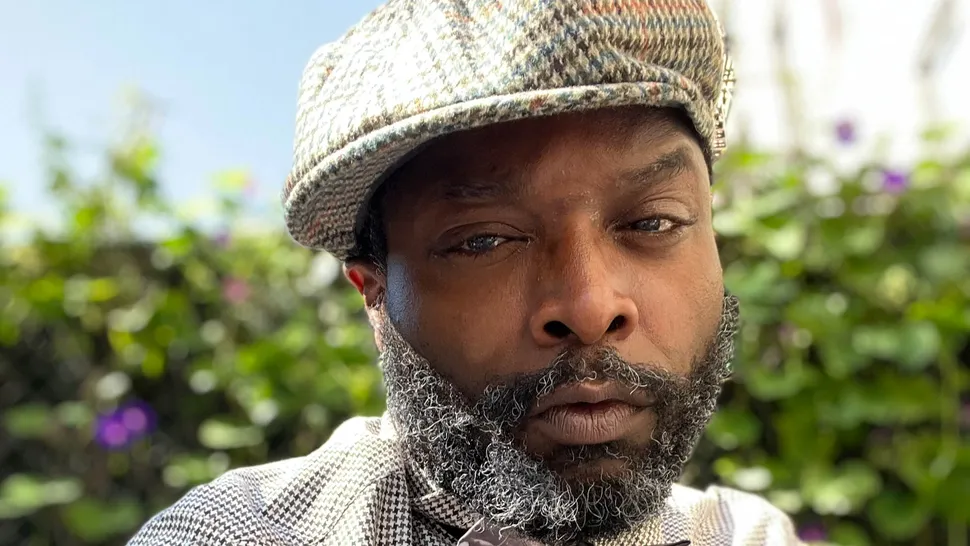
(Image credit: Future)
Apple made no adjustments to the 12MP front camera, and it didn't need to because it provides ample information. My attractive buddy tried out the camera, and it did not disappoint, capturing the fine details on his houndstooth pageboy hat as well as the fine hairs in his salt and pepper beard. And the bokeh is fantastic.
I was especially delighted with my evening selfie since it didn't wash out my skin tone and captured some of the wrinkles and stitching on my denim jacket.
Apple iPhone 13 Pro max Review: Software and Warranty
Without software, whether a smartphone or a laptop, it's simply a paperweight. The iPhone 13 Pro Max runs iOS 15, which was just launched. As with most new operating systems, iOS 15 includes several changes that improve Safari, Apple Maps, FaceTime, and alerts, to name a few.
Let's get started with FaceTime. The most appreciated feature in FaceTime's new ability to connect with Android users by sending a link to begin video talking. When it comes to video chats and conferences, FaceTime has a backdrop blurring feature that allows you to be front and center in the frame. The next cool part has yet to be released, but it will be shortly. Screen sharing will enable lonely individuals to gather together and watch movies or series on their chosen streaming platform, which is helpful while we are still dealing with the epidemic.
Now let's go on to Shared With You. If you've ever attempted to sift through mounds of stuff on your phone in search of that one specific item from that one specific person, Shared With You is exactly up your alley. The tool eliminates all of that annoyance by looking through your stuff (pictures, music, Apple TV, and Apple Podcasts) sent by your connections. Shared With You also integrates with Apple News, allowing you to locate stories shared with you by friends and family quickly.
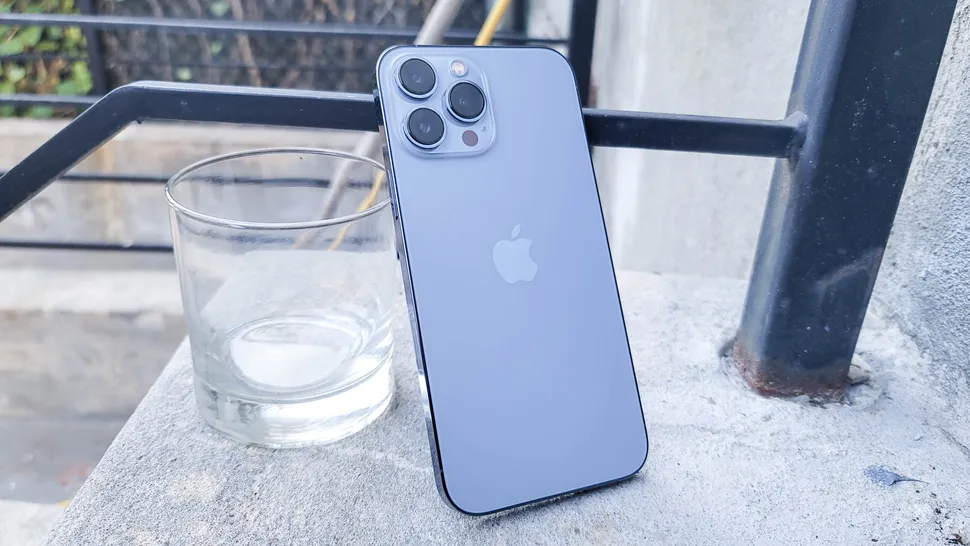
(Image credit: Future)
Live Text is also included in iOS 15. Like Samsung's Extract Text feature on the Note, the tool can extract Text in photographs, allowing you to copy and paste, search, or translate it. It's happened to all of us. We're working on something important when we pause to check the clock on our phones, and before you know it, you're viewing your ninth TikTok video. IOS 15 introduces the new Focus function to reduce these instances, which boosts productivity by restricting which applications and texts you may access.
The Find My function has been improved, which is a good thing because it's inevitable that you'll lose your phone someplace. When this occurs, iOS 15 will send a notice to another Apple device, such as the Apple Watch Series 7 or the iPad Pro, as well as a map of its whereabouts. It's a fantastic Find My function that comes in handy during those forgetful moments we all have.
Those worried about their privacy may welcome the new Mail Privacy Protection function, which hides your IP address and location from senders. It also prevents inquisitive Nancies from determining when and if you opened their email. Another helpful tool is the App Privacy Report, which allows you to view how frequently applications have accessed your data (for example, location and images), as well as whether those apps are contacting other sites. Account Recovery Contacts, which Apple claims would make changing your password and accessing your account more accessible than ever, is available for Apple ID users. And, due to the Digital Legacy program, you may designate people as Legacy Contacts so they can access your account in the event of your death.
Other enhancements include revamped Notifications, which now display photographs for your contacts and more extensive, more easily identifiable symbols. Memories have also been updated with a more customized experience and interactive interface.
In Conclusion
My best smartphone would most likely be the iPhone 13 Pro Max. It's overpowering and stunning as heck, which is just my style. And, as a content hoarder, I'd seriously consider the $1,599 device I evaluated. Should you do it? No, you're probably OK with 256 or 512GB of storage. To make matters worse, many of you probably don't need the iPhone 13 Pro Max –– you'd be good with the iPhone 13 Pro or even the iPhone 13.
Before you do a double-take, let me explain what I meant. The iPhone 13 Pro Max crushed almost every test we threw at it. Without a doubt, it's a multitasking/gaming/photography powerhouse. In our battery test, it lasted more than 12 hours. However, like the Samsung Galaxy Note 20 Ultra, the iPhone Pro Max 13 is designed for heavy users, not those of us who spend our time watching movies, scrolling through social media, reading books, and messaging.
So, to whom would I suggest the iPhone 13 Pro Max? Content creators emphasize photographers and filmmakers who would not purchase a camera like the Blackmagic Pocket Cinema 6K. It's also for folks like myself who appreciate luxury, power, and durability, all of which the iPhone Pro Max 13 provides in abundance.




Comments (0)